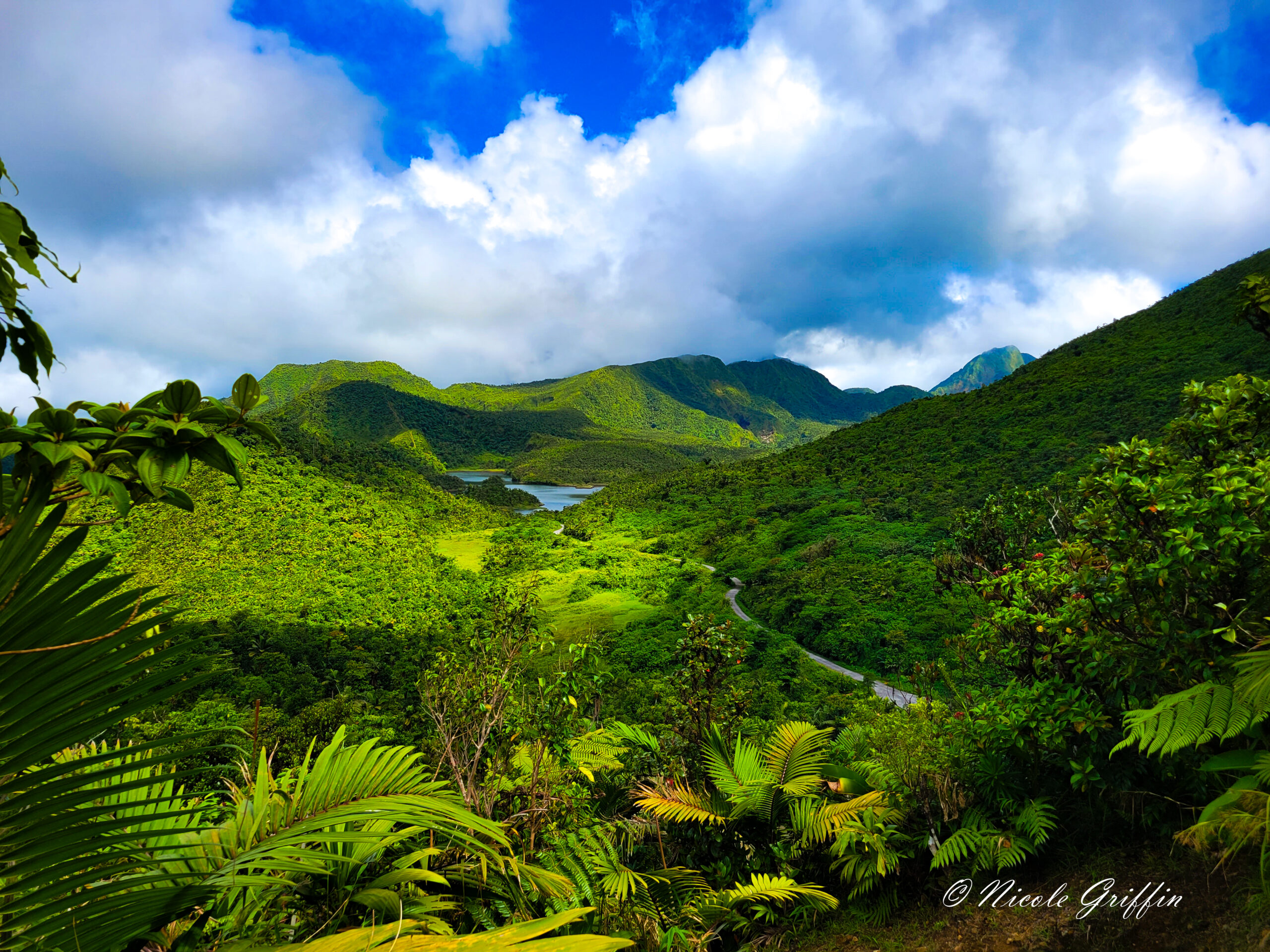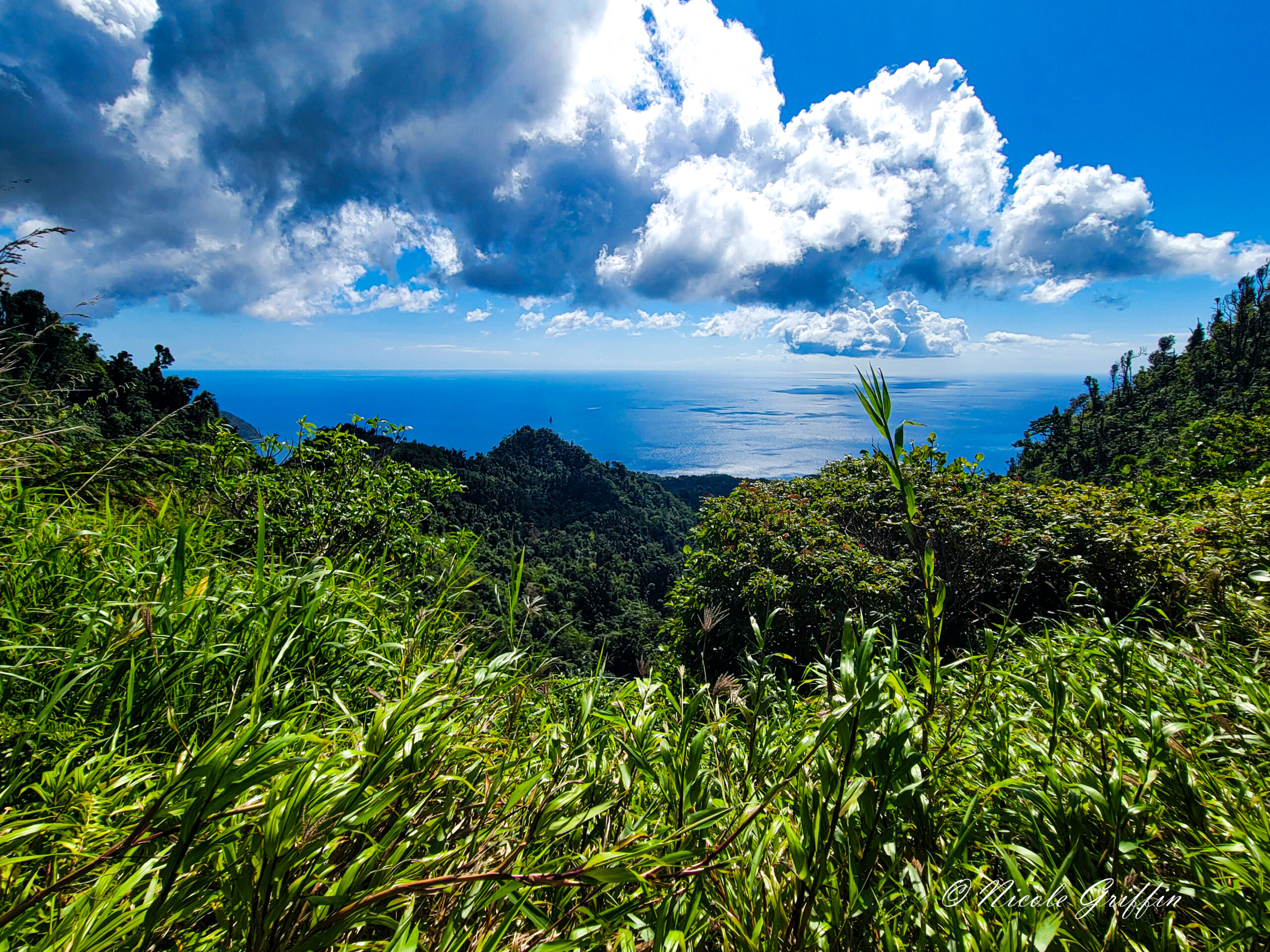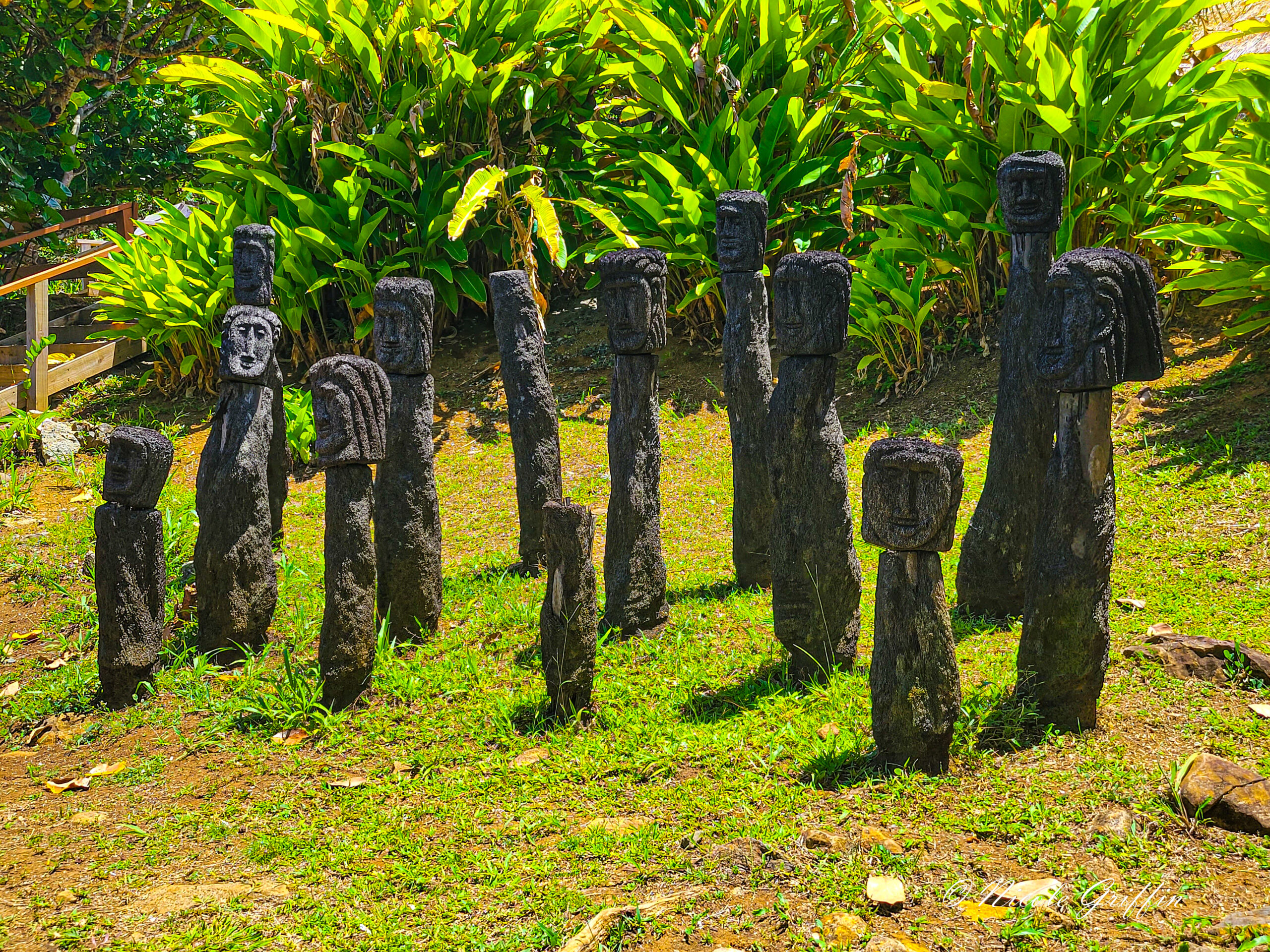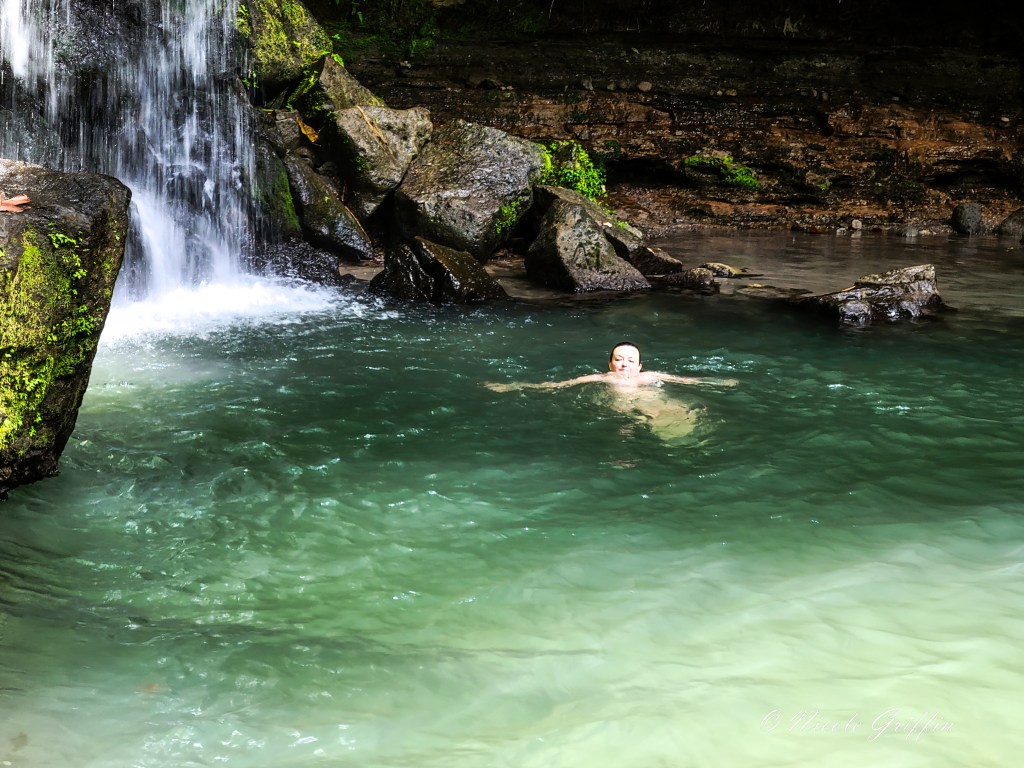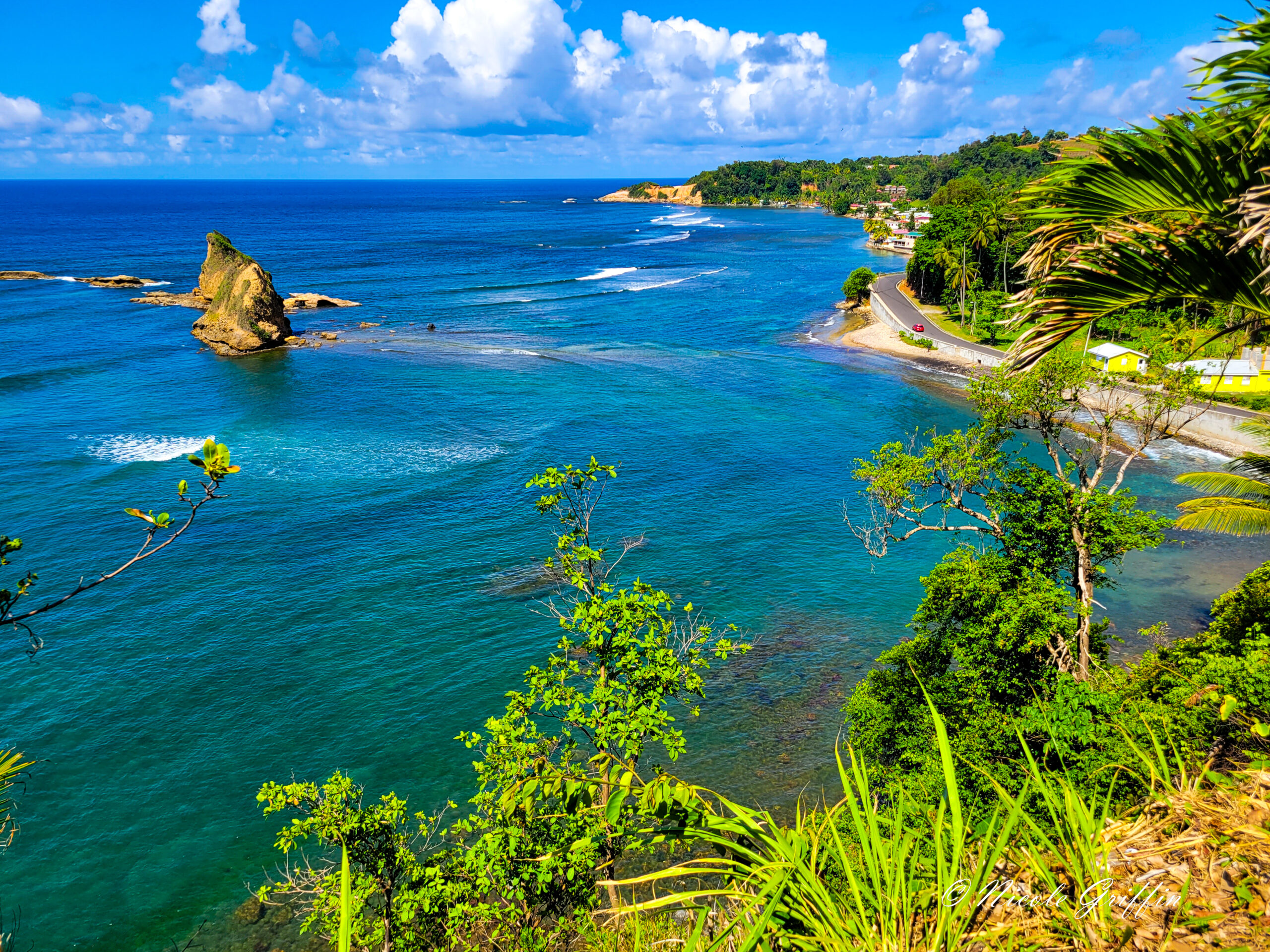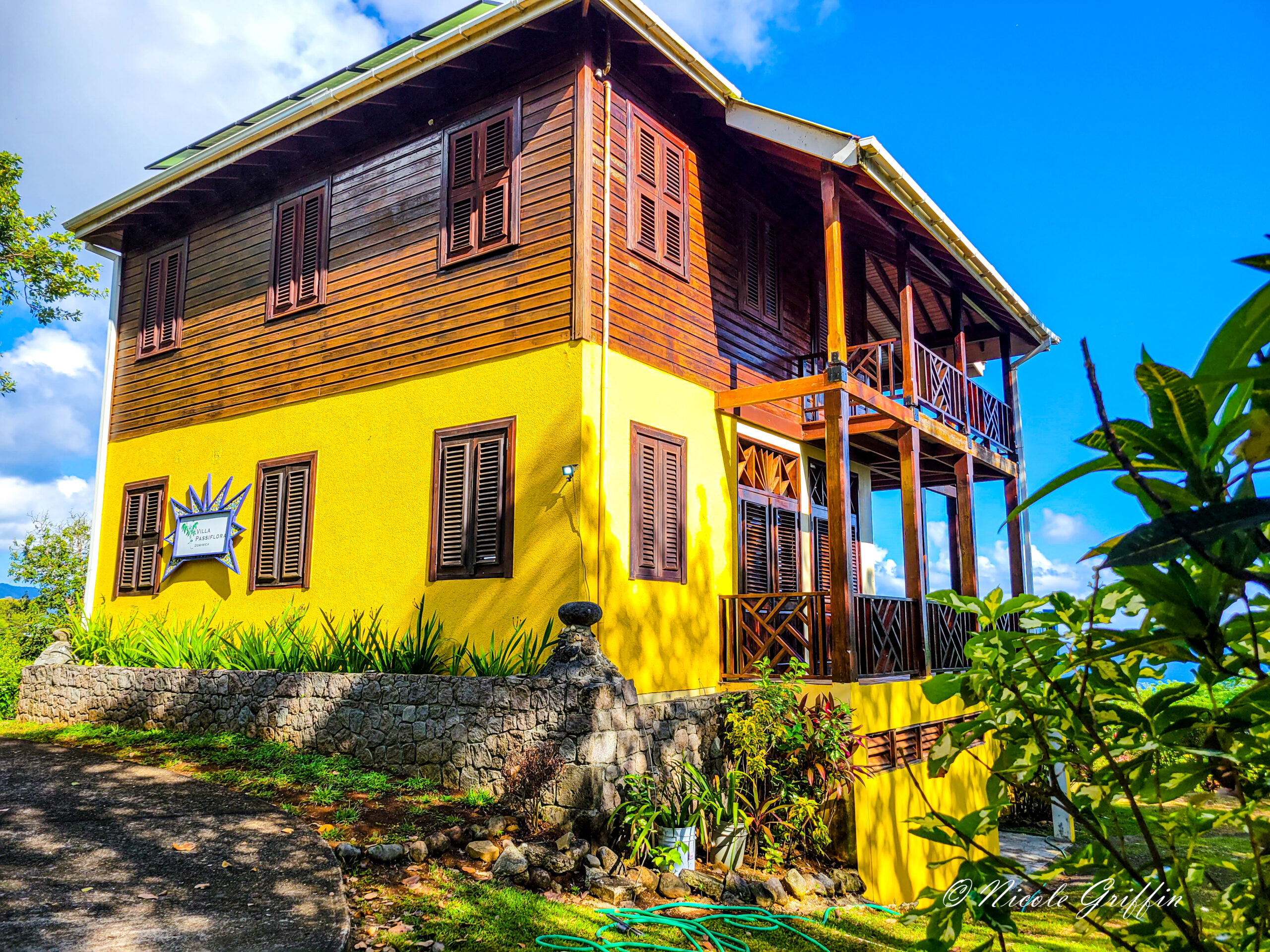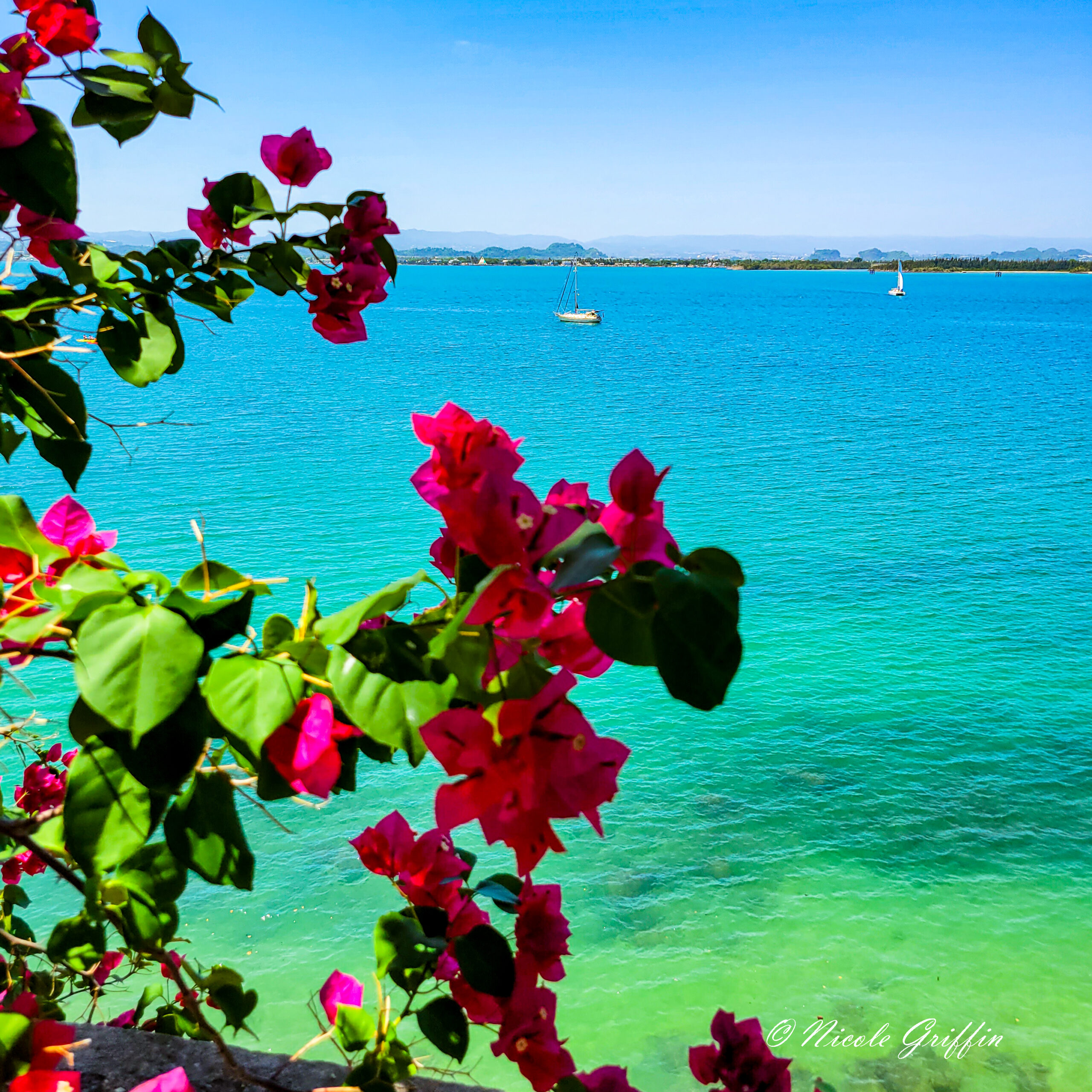Our tour books said that as long as no cruise ships were in port in Roseau, we would not encounter large crowds, even at the larger tourist attractions like Trafalgar Falls. (Tip: cruise ships stop calling in May and don’t return till October. Yes, it’s hurricane season, live a little!)
Wednesday of the first week in May, we put this to the test and drove south towards Roseau, the capital city where the cruise ships port, and thus the most “heavily touristed” part of the country.
trafalgar falls
We got up early and made it to Trafalgar Falls by about 9 am. At that hour, the site was completely deserted—not even an attendant present to check our passes to the parks! It was a very short walk to the falls (10 min, not quite handicapped accessible, but easy).
Trafalgar Falls are an impressive pair of waterfalls, sprouting from opposite sides of a dark, forested escarpment. They are dramatic in the way that major tourist destination waterfalls tend to be, though personally I prefer the humbler, hidden ones, like Bwa Nef and Emerald Pool. But I have to admit that it’s a rare thing to see big dramatic waterfalls like this without fighting with a single other tourist.
It was too bad that 9 am also corresponded with the absolute worst time for photography. The sun was just rising behind the cliff, and the glare was unforgiving. Otherwise, the photographs unspoiled by other humans would have been fantastic.
We stayed for about a half hour, trying to get pictures for a while before we gave up and soaked up the experience. I did get some great pictures of lizards. (Did I mention that I was taking pictures of lizards everywhere in Dominica? I was. You’ll find I love taking pictures of wildlife, no matter how small.) By the time we left, a few other tourists and the staff had arrived.

Dominica is mountainous, so there are hiking trails all over the island, many of them very challenging. I enjoy hiking very much, but I am, let’s just say, a moderate trail hiker. I can walk for long distances, but steep vertical gains are not my friends and I do not pretend that I am up for them. My friend was recovering from a leg injury, and she was even less game for a challenging hike than I was.
(And you’ll note that nowhere in any of these Dominica posts do I even mention Boiling Lake, one of Dominica’s top tourist attractions. See previous paragraph. Also, a challenging hike that ends in a lake that I can’t even jump into to cool off? Double no thank you.)
boeri lake
We decided instead to take a trail that led to a lake that we could hop in at the top: Boeri Lake. Its trailhead was a short 15 or 20 minute drive from Trafalgar Falls. The initial vertical gain was fairly steep, but the views were worth it. The lush green mountains cascaded down to the shores of the Atlantic, which mirrored the sky so perfectly it was hard to tell where water ended and sky began.

The mountain peaks towards which we hiked swathed in gently meandering clouds, which dampened and cooled the land the farther north we climbed.
Lake Boeri was a smallish lake to look at it, its waters a bold shamrock green. Cool cloud forest or not, I was steamy by the time we reached the top and hopped in as quickly as I could deposit my bags and rip off my clothes. I was wearing a bathing suit underneath, to be clear, but honestly I didn’t need to be—not another soul was sharing the lake with us.

I set out to swim to the opposite shore, but realized quickly that the lake was actually quite a lot larger than it appeared. The water was delightfully cool and fresh, so much so that we took our chances and filled our water bottles without sterilizing (to no ill aftereffects).

I will say of the hike, for the benefit of those with mobility issues, it was a lot more challenging than the books make it out to be. The Bradt guide rated it as roughly equivalent to the Bwa Nef hike. It was far harder. For me, a woman in her 40s in reasonably good condition, it was an easily manageable, moderate hike. After the initial vertical gain, I found the most challenging part to be navigating the rocks on the trail, which were often quite slick from the mists.
For my friend recovering from a leg injury, it was definitely too much. It was only about a mile in-and-back hike, but our progress was slow so the hike took us hours. I spent a lot of time watching the clouds drift over the mountains and taking selfies and pictures of lizards and flowers while waiting for her to catch up. To her credit, she soldiered on.

Boeri Lake had taken up far more time than we planned, so sadly we did not have time to make to the hot springs in Wotten Waven. Instead we grabbed a meal in Roseau and headed home via a new route. The coastal road from Roseau to Portsmouth runs along the west coast of the island between its two largest cities, and is by far the best road on the island. We watched the sun set over the Caribbean from our trusty car, as we ended our fifth day in Dominica.
